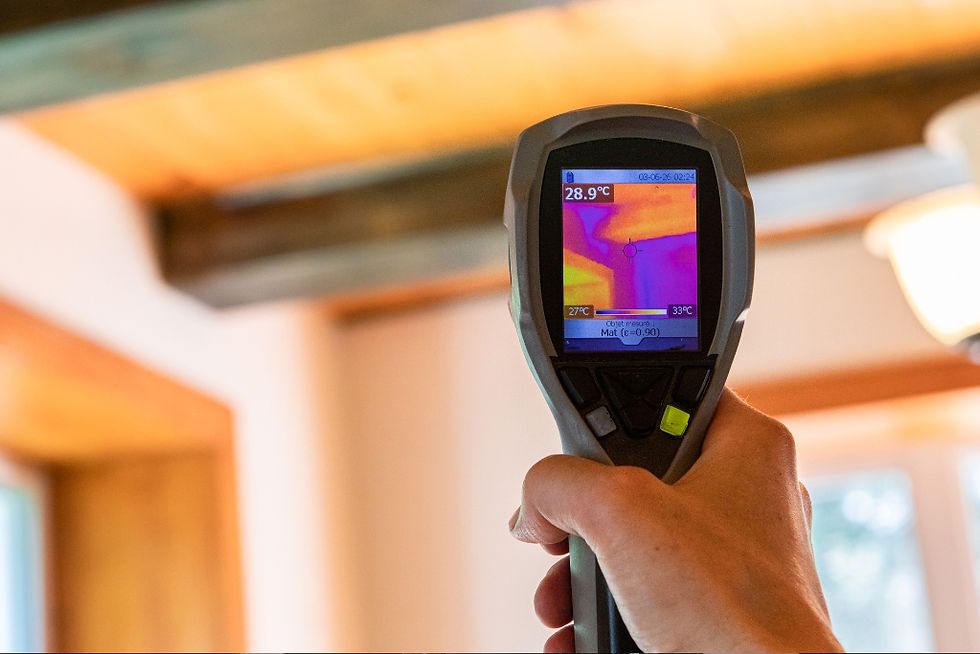DIY Tips for Improving Indoor Air Quality
- directcustomfilter8
- Oct 11, 2024
- 3 min read
In our modern, fast-paced lives, we find ourselves spending a considerable amount of time indoors, whether it be at home or in the office. Despite this, it's alarming how often people overlook the quality of indoor air, which can frequently be more contaminated than the air outside, posing risks to our health. Thankfully, there are straightforward do-it-yourself (DIY) approaches that can significantly enhance indoor air quality, with one highly effective method being the utilization of 20x20x2 filters.

Understanding the Importance of Indoor Air Quality
Before exploring the DIY tips, it's imperative to grasp the significance of indoor air quality. The ramifications of poor indoor air quality are vast, extending to various health issues such as respiratory ailments, allergies, and chronic conditions like asthma. Among the plethora of indoor pollutants, one can encounter dust, pet dander, pollen, mold spores, and volatile organic compounds (VOCs) emitted by household products. Understanding these factors underscores the critical need for initiatives aimed at improving indoor air quality, with measures like utilizing 20x20x2 filters serving as effective interventions.
Using Filters for Air Filtration
One of the most straightforward yet highly efficient methods for enhancing indoor air quality involves the use of air filters. Among the plethora of options, the 20x20x2 filter stands out as a standard size compatible with the majority of HVAC (heating, ventilation, and air conditioning) systems typically installed in residential and commercial spaces. Engineered to trap airborne particles while air circulates through the HVAC system, these filters play a pivotal role in diminishing the concentration of pollutants within indoor environments. This simple addition significantly contributes to creating a healthier and more comfortable atmosphere for occupants.
DIY Tips for Improving Indoor Air Quality with Air Filters
Regular Filter Replacement: The most basic yet essential DIY tip is to regularly replace the 20x20x2 filter in your HVAC system. Over time, filters become clogged with dust, dirt, and other particles, reducing their effectiveness. Aim to replace the filter every 1 to 3 months, depending on factors such as indoor air quality, pet ownership, and the presence of smokers.
Upgrade to High-Efficiency Filters: Consider upgrading to high-efficiency filters with a MERV (Minimum Efficiency Reporting Value) rating of 11 or higher. These filters are more effective at capturing smaller particles, including allergens and airborne bacteria. While they may be slightly more expensive, the improved air quality and potential health benefits make them worth the investment.
Seal Air Leaks: Air leaks around doors, windows, and ductwork can allow outdoor pollutants to enter the indoor environment. Use weather stripping and caulking to seal gaps and cracks, preventing the infiltration of outdoor air contaminants. By maintaining a tighter seal, you can also improve the efficiency of your HVAC system, reducing energy consumption.
Keep Indoor Spaces Clean: Regular cleaning is essential for reducing indoor air pollutants. Vacuum carpets and upholstery using a vacuum cleaner equipped with a HEPA (high-efficiency particulate air) filter to trap dust and allergens. Using a moist towel, dust surfaces to stop particles from flying. Additionally, regularly launder bedding, curtains, and other fabric items to remove accumulated dust and allergens.
Control Humidity Levels: Excess humidity can promote the growth of mold and mildew, which can worsen indoor air quality and trigger allergies and respiratory issues. Use a dehumidifier to maintain indoor humidity levels between 30% and 50%. In areas prone to moisture buildup, such as bathrooms and kitchens, ensure proper ventilation by using exhaust fans or opening windows when cooking or showering.
Introduce Air-Purifying Plants: Certain houseplants can help naturally purify indoor air by absorbing pollutants and releasing oxygen. Consider adding plants such as spider plants, peace lilies, snake plants, and Boston ferns to your indoor space. Not only do they improve air quality, but they also add aesthetic appeal to your home or office environment.
Avoid Harsh Chemicals: Many household cleaning products and air fresheners contain chemicals that can contribute to indoor air pollution. Opt for natural or eco-friendly cleaning solutions whenever possible, or make your own using ingredients like vinegar, baking soda, and essential oils. By reducing the use of harsh chemicals, you can minimize indoor air pollutants and create a healthier living environment.
Conclusion
Ensuring good indoor air quality is vital for creating a healthy and pleasant living space. By integrating straightforward DIY strategies like the routine replacement of 20x20x2 filters, sealing off air leaks, and maintaining cleanliness throughout indoor areas, you can significantly diminish indoor air contaminants and relish in a purer, more invigorating atmosphere. It's important to recognize that even minor adjustments can yield substantial benefits in enhancing indoor air quality, ultimately contributing to improved overall well-being and comfort. Prioritizing these proactive measures not only fosters a healthier indoor environment but also cultivates a sense of harmony and vitality within your home or workplace. Take charge of your indoor air quality today, and experience the transformative impact it can have on your daily life.